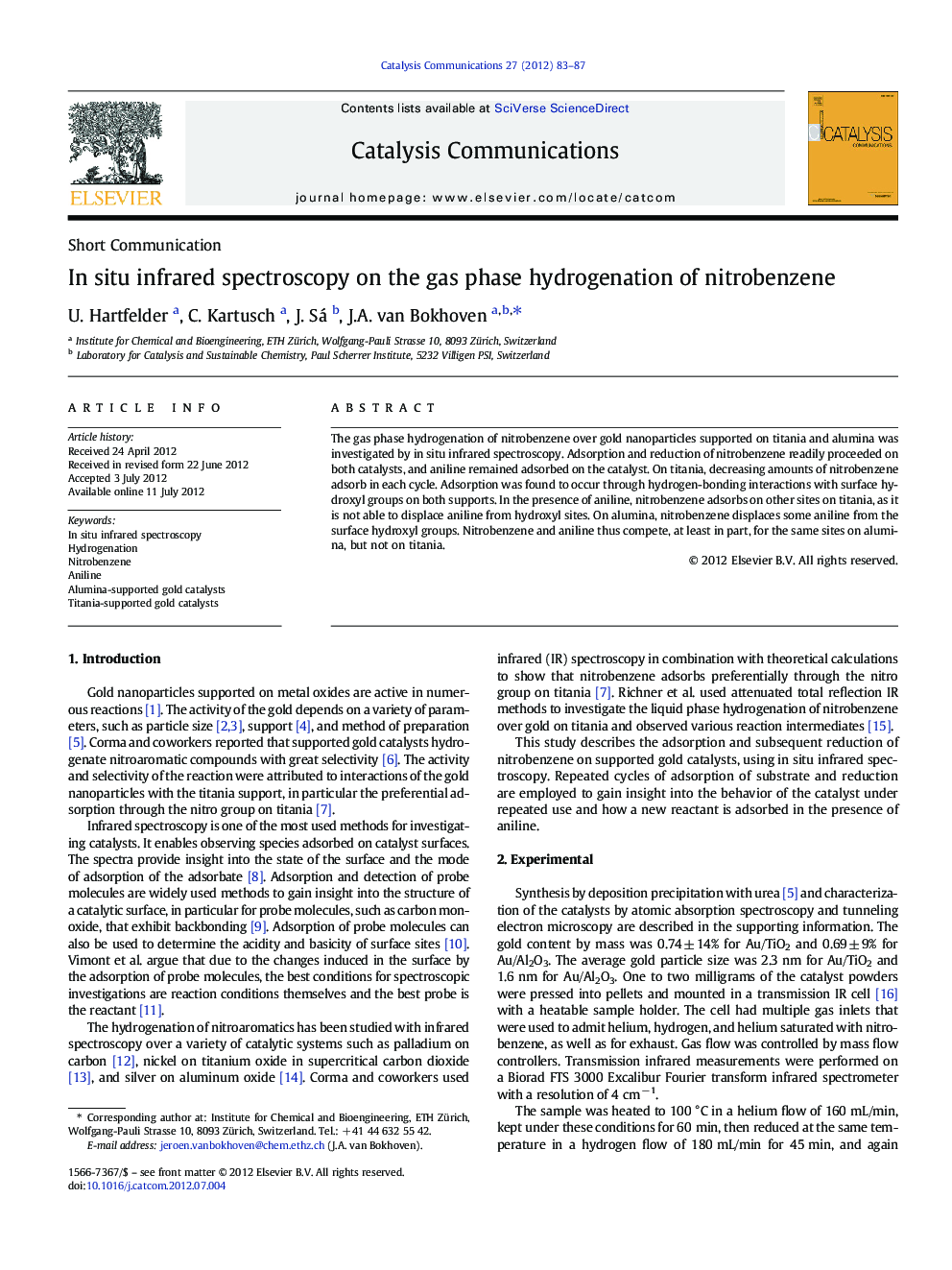| Article ID | Journal | Published Year | Pages | File Type |
|---|---|---|---|---|
| 49974 | Catalysis Communications | 2012 | 5 Pages |
The gas phase hydrogenation of nitrobenzene over gold nanoparticles supported on titania and alumina was investigated by in situ infrared spectroscopy. Adsorption and reduction of nitrobenzene readily proceeded on both catalysts, and aniline remained adsorbed on the catalyst. On titania, decreasing amounts of nitrobenzene adsorb in each cycle. Adsorption was found to occur through hydrogen-bonding interactions with surface hydroxyl groups on both supports. In the presence of aniline, nitrobenzene adsorbs on other sites on titania, as it is not able to displace aniline from hydroxyl sites. On alumina, nitrobenzene displaces some aniline from the surface hydroxyl groups. Nitrobenzene and aniline thus compete, at least in part, for the same sites on alumina, but not on titania.
Graphical abstractFigure optionsDownload full-size imageDownload as PowerPoint slideHighlights► Reduction of nitrobenzene over gold-catalysts was monitored by IR spectroscopy. ► Adsorption–reaction cycling was used to investigate different supports. ► Nitrobenzene initially adsorbs on surface hydroxyl groups. ► On alumina, but not titania, nitrobenzene can displace aniline from surface hydroxyls.
